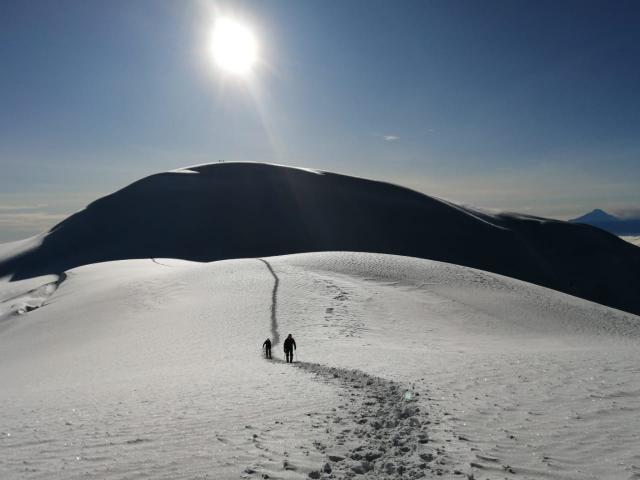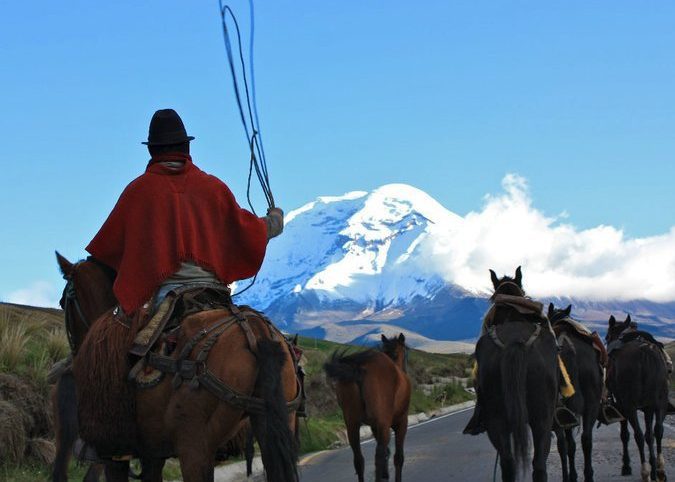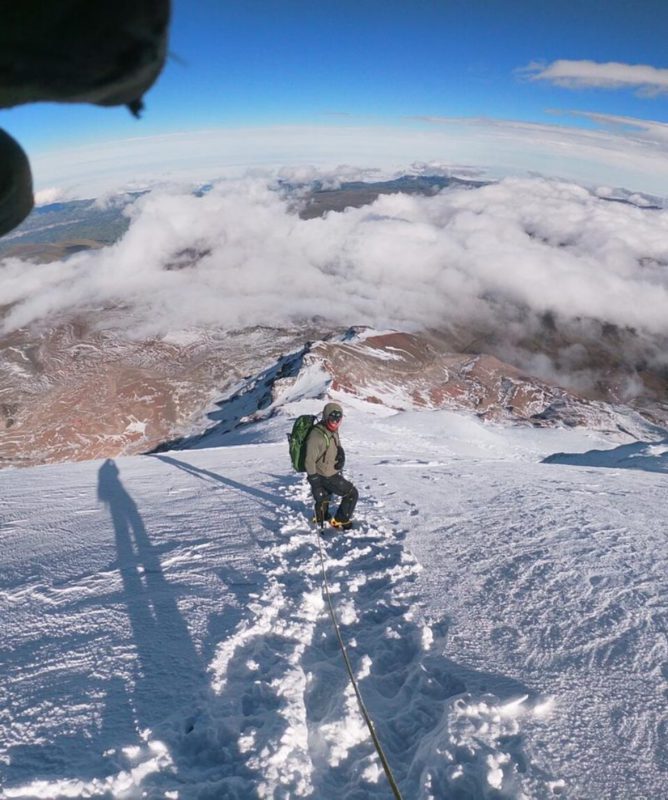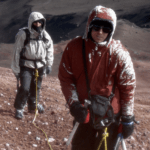Chimborazo is not actually higher than Everest. Mount Everest, located in the Himalayas, is currently recognized as the highest mountain in the world, with an elevation of 8,848 meters (29,029 feet) above sea level.
However, if we consider the distance from the center of the Earth rather than just the elevation above sea level, then Mount Chimborazo is actually the farthest point from the center of the Earth. This is due to the fact that the Earth bulges at the equator, making mountains near the equator farther away from the center of the Earth than those located closer to the poles.
Chimborazo is located near the equator, and its summit is only 1.5 degrees south of the equator, which means it is much closer to the Earth’s center than other high mountains like Everest. In fact, Chimborazo’s summit is approximately 2,100 meters (6,890 feet) farther from the Earth’s center than Everest’s summit, despite being almost 2,600 meters (8,530 feet) lower in elevation.
So, while Chimborazo is not actually higher than Everest in terms of elevation above sea level, it is considered the mountain that is farthest from the center of the Earth, making it a unique and fascinating natural wonder.

The summit of the Chimborazo Stratovolcano
Chimborazo is a stratovolcano located in the Andes mountain range of Ecuador, standing at an elevation of 6,263 meters (20,548 feet) above sea level. It is the highest mountain in Ecuador and the highest peak near the equator. The Chimborazo climb is a popular mountaineering activity for experienced climbers due to its technical difficulty, high altitude, and unpredictable weather conditions.
The Chimborazo climb typically takes several days and involves camping at high altitudes to acclimatize to the thinner air. The climb itself involves navigating steep slopes and rocky terrain while dealing with freezing temperatures and strong winds. Climbers must be physically fit and have experience in high-altitude mountaineering to attempt Chimborazo.
The summit of Chimborazo offers stunning panoramic views of the surrounding Andes mountains, including many other high peaks in Ecuador. On a clear day, climbers can see as far as the Pacific Ocean from the summit. The Chimborazo summit is marked by a small chapel built in honor of Saint Bernard, the patron saint of mountaineers.
Overall, the Chimborazo climb is a challenging and rewarding experience for those who are up to the task. It requires preparation, experience, and proper equipment to safely reach the summit, but the views and sense of accomplishment are truly unforgettable.

How technical is climbing Chimborazo?
Chimborazo is a technical climb that requires a high degree of skill and experience in mountaineering. Climbers attempting Chimborazo must be physically fit and have previous experience in high-altitude mountaineering, as well as knowledge of technical climbing techniques.
The climb involves navigating steep slopes, glaciers, and rocky terrain, often in icy and unpredictable weather conditions. Climbers must use technical equipment such as ice axes, crampons, and ropes to ascend and descend the mountain safely.
Additionally, the high altitude of Mount Chimborazo can pose a significant challenge to climbers. Altitude sickness is a real concern, and climbers must take the time to acclimatize to the thin air before attempting to reach the summit.
Overall, Chimborazo is a challenging and technical climb that requires a high degree of skill and experience. It is not recommended for inexperienced or novice climbers, and those attempting the climb should do so with an experienced guide and the proper equipment.

Reaching the summit Vintimilla and Whymper of Chimborazo
Chimborazo has several routes that can be taken to reach its summit, including the Vintimilla and Whymper routes.
The Vintimilla route is the most direct and least technical route to the summit of Chimborazo. It begins at the Hermanos Carrel mountain hut, located at an altitude of 4,800 meters (15,750 feet) above sea level. The route follows a steep path that ascends the mountain’s west face, passing through rocky terrain and a glacier before reaching the summit.
The Whymper route, named after British mountaineer Edward Whymper, is a more technical and challenging route to the summit of Chimborazo. It begins at the Whymper mountain hut, located at an altitude of 5,000 meters (16,400 feet) above sea level. The route follows the mountain’s southwest ridge, passing through steep and exposed terrain before reaching the summit.
Both the Vintimilla and Whymper routes require a high degree of skill and experience in mountaineering, as well as proper equipment such as ice axes, crampons, and ropes. Climbers attempting these routes must also be prepared for the high altitude and unpredictable weather conditions that are common on Chimborazo.
Overall, the Vintimilla and Whymper routes are both challenging and rewarding climbs that offer stunning views and a sense of accomplishment for those who are up to the task. Climbers attempting either of these routes should do so with an experienced guide and the proper equipment.
Jake is originally from Sydney and co-founded Ecuador Eco Adventure with Wlady back in 2006. Together they built one of the country's most prominent climbing and hiking agency that is number one in summit attempts of Chimborazo, Cotopaxi, Antisana, and Cayambe. Ecuador Eco Adventure has since been recommended in National Geographic Adventure, The Rough Guide, and the Lonely Planet.



5 Comments
Why do these two statements conflict in my interpretation:
1) “Chimborazo is located near the equator, and its summit is only 1.5 degrees south of the equator, which means it is much closer to the
Earth’s center than other high mountains like Everest.”
2) “In fact, Chimborazo’s summit is approximately 2,100 meters (6,890 feet) farther from the Earth’s center than Everest’s summit, despite
being almost 2,600 meters (8,530 feet) lower in elevation.”
Shouldn’t the first statement be “Chimborazo is located near the equator, and its summit is only 1.5 degrees south of the equator, which means it is much ‘farther’ to the Earth’s center than other high mountains like Everest.” since the diameter of the earth is greater across the equator due to centrifugal force than the distance from the North Pole to the South Pole.
Thank you, and waiting for your response,
Trig
yes they do conflict with each other. lol
I try not to use negative language, yet, it’s so freaking annoying and stupid, how on all searches of the highest mountain in the world, they start by saying that it’s Mount Everest, only to then correct themselves that it’s actually Chimborazo, when measured from the center of the earth, which is the only fact!
When it comes to someone’s height, one is only interested in their real height, standing on the floor,not on a chair!
So every freaking site should simply say the truth and respond that it’s Chimborazo, which is in ECUADOR!!!
What’s interesting about you statement is that it is Chimborazo that is sitting near the equator and on a bulge in the earth (effectively a chair), so using sea level as a base is more closely to measuring from the floor and that makes Everest the tallest. Otherwise simply sitting on a beach near the equator would be considered higher than the tallest mountain in Antartica and thats obviously a silly way to measure the height of mountains.
I think mountains should be measured from their base to their summit, which would make Mona kea in Hawaii the tallest mountain on earth
Even then Everest isn’t the tallest, it used the chair to stand on the kitchen counter, I mean look at the elevation at base. It would be unequivocally Mauna Kea, except while not standing on a chair, has its entire height supported and being lifted by a “sea” of hands. We weight only 1/6th in water. So what’s fair? Well, when we remove Mauna Keas height gain from being undersea, and consider its height from id base foothill elevation to peak – the tallest mountain is … still Mauna Kea.
Functional Always active
Preferences
Statistics
Marketing